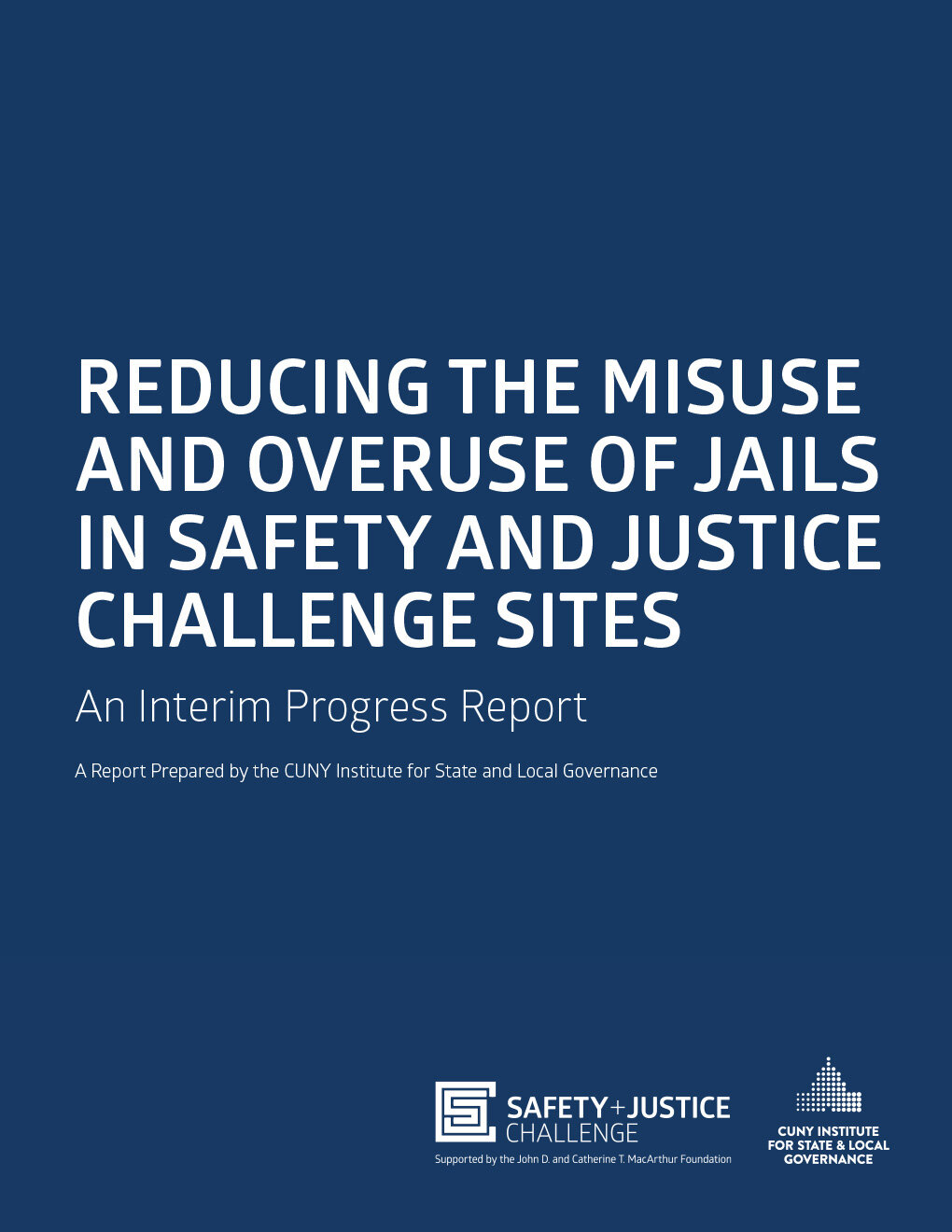RESOURCES
Knowledge Center
Outcomes, discoveries, and analysis from our breadth of good governance initiatives.

Jail Decarceration and Public Safety: Preliminary Findings from the Safety and Justice Challenge
The goal of the Safety and Justice Challenge is not only to reduce jail populations, but to do so safely—and this has been a pillar of the initiative since its inception in 2015. While previous briefs have highlighted the substantial reductions made in jail populations across SJC sites, this report provides an initial look at SJC’s decarceration strategies through a safety lens. More specifically, it explores how aggregate crime rates and returns to custody among people released from jail changed after the launch of SJC and the implementation of its decarceration strategies in sites through 2019. Overall, the findings suggest that decarceration strategies can indeed be crafted and implemented responsibly, without compromising public safety. In fact, public safety outcomes across SJC sites and in most individual sites remained relatively constant before and after the implementation of decarceration reforms.

Creating a Trauma-Informed Abusive Partner Intervention Program
This policy brief explores the new trauma-informed abusive partner intervention program being piloted in Manhattan, describes core program tenets of that model, and outlines early policy recommendations for working with abusive partners, serving survivors, and integrating trauma-informed care into behavioral health and social service delivery.

Capacity Building for Community-Based Organizations as an Investment in Social Change
This latest policy brief explores how the CJII capacity building program was designed, key approaches to its successful implementation, and lessons learned to maximize grantees’ immediate and long-term impacts.

Reducing the Misuse and Overuse of Jails in Safety and Justice Challenge Sites
This interim report focuses on performance three years into the Safety and Justice Challenge (through April 2019), an initiative supported by the John D. and Catherine T. MacArthur Foundation to reduce populations and racial disparities in American jails. Three years of data from SJC sites across the United States shows it’s possible to successfully reduce jail populations.

Jail Population Trends in Safety and Justice Challenge Sites During COVID-19
A new brief highlights jail population trends during the COVID-19 pandemic. Throughout 2020, as the extensive impacts of the COVID-19 pandemic became clear, many municipalities—including those participating in the John D. and Catherine T. MacArthur Foundation’s Safety and Justice Challenge (SJC) — implemented emergency measures to reduce their jail populations. Here we describe how those measures influenced jail populations in SJC sites between February and October 2020.

Immigration and Crime: A Public Policy Red Herring
Federal immigration policy remains at the forefront of national dialogue, but the debate is nothing new; equally long-standing is the shared belief among some policymakers and voters that increases in immigration lead to increases in crime and that immigrants are more likely to commit crimes than native-born citizens. It is vital that policymakers utilize accurate and timely information to prevent harmful, wasteful, and ineffective immigration policy decisions. This research brief responds to this critical need by offering a thorough, balanced, and evidence-based overview of the actual relationship between immigration and crime.

Dollars and Sense in Cook County
To lend an objective review of 2017 justice reforms in Cook County, IL, the Safety and Justice Challenge Research Consortium issued a RFP for researchers to assess the relationship between bond court reform and crime in the County, grounding local debates in a meaningful and robust analysis that addressed the limitations of prior analyses. Researchers from Loyola University’s Center for Criminal Justice Research, Policy, and Practice conducted the study and this report summarizes their findings: that the new policy significantly increased the number and rate of pre-trial releases, reduced bail amounts for defendants where bail was still ordered, and had no effect on new criminal activity or crime.

Equity Indicators Baseline Report: St. Louis Aligns Equity Indicators with Ferguson Commission's Calls to Action
In 2017 the City of St. Louis, in partnership with Forward Through Ferguson and United Way of Greater St. Louis, was chosen as one of five US cities to create an Equity Indicators tool through our initiative, funded by The Rockefeller Foundation. The tool is built around the three themes identified by the Ferguson Commission: Youth at the Center, Opportunity to Thrive, and Justice for All. Within each theme are three topics, and within each topic are eight indicators—for a total of 72 indicators that can be monitored each year to track St. Louis’ progress toward racial equity. This report provides a first year of baseline static scores; following years will produce change scores for each level of data based on the difference in scores from one year to the next.

Equity Indicators Baseline Report: Oakland's Equity Indicators Offer Foundation for New Department of Race and Equity
Oakland has a long history of activism around issues of inequity, and was chosen in 2017 among our first cohort of cities to develop local Equity Indicators through our initiative, funded by the Rockefeller Foundation. The purpose of this report is to develop a baseline quantitative framework that can be used by City staff and community members alike to better understand the impacts of race, measure inequities, and track changes in the disparities for different groups over time. This framework can then be used to guide and inform policies that address disparities.

Who Runs Our Cities? The Political Gender Gap in the Top 100 U.S. Cities
Women comprise half of the population, but are highly under-represented at all levels of government. While other studies look at women’s representation at the federal and state level, a new report from our Equity Indicators initiative examines their representation at the local level.
